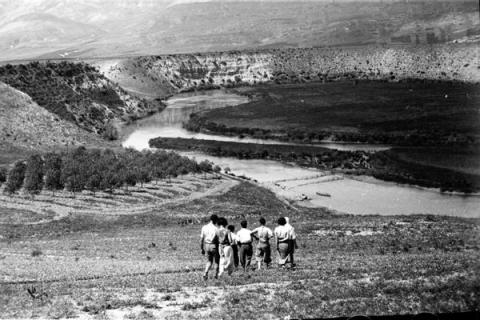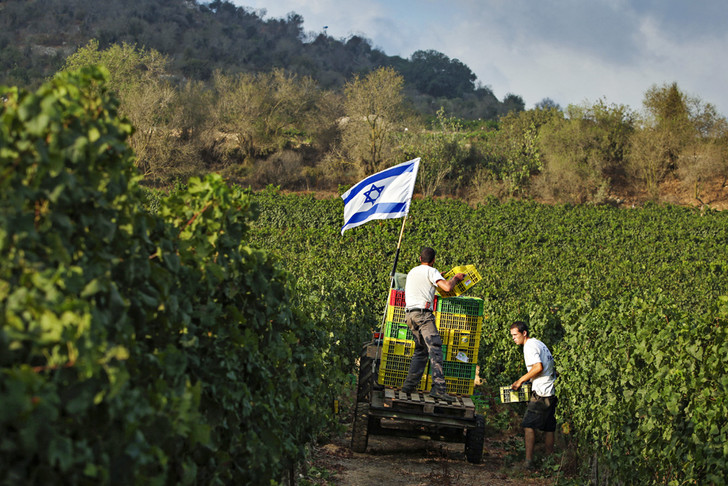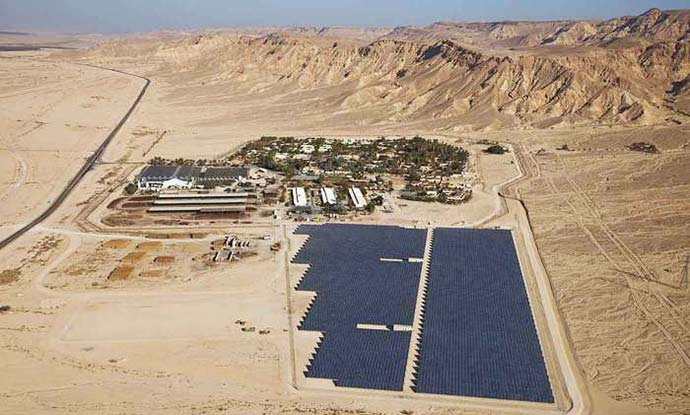Israel. Kibbutzim. Communism and the market
In discussions about the political systems of different countries, such a country as Israel is increasingly often passed over. It is understandable, few people know enough about it, and most will not even be able to find it on the map, even if they know that it is somewhere near the Dead Sea. But if you have ever mentioned Israel in a discussion with representatives of leftist ideologies, you have almost certainly heard from them that this country was created by socialists. And it will be true. But what about the beginnings of communism now, how have they changed with the market, and how do they relate to libertarian ideas? This is what I decided to write this article about.
Kibbutzim. Beginning.
The kibbutzim served as the communist seed, which eventually gave the Jewish nation its own state. It is difficult to explain the meaning of the word kibbutz (Hebrew קִבּוּץ; originally קְבוּצָה, kvutza - “group”, also kibbutz), since the word “collective farm” will be as close as possible in meaning to it, but at the same time there will be very big difference, but more on that later.
The very first kibbutz appeared in 1910. It was founded by Jews who fled from Jewish pogroms in the Russian Empire. In addition to the reasons for resettlement and nationality, they were united by a common communist idea. And unlike their brothers in ideology, who dreamed of a world revolution, these settlers decided to make their community on these ideals, to start with themselves. And already here, at the very beginning, we see an important aspect that distinguishes a kibbutz from a collective farm - the principle of voluntariness. Which by the way is observed to this day.
According to legend, the founders of Dgania Alef, the first kibbutz, threw all their property, right down to their clothes, on the ground at the time of their founding, and together they decided that they would share it equally. They only had one good pair of shoes for nine, so they took turns wearing them.
And here we can see the next principle that greatly distinguishes the kibbutz - direct democracy. Yes, all kibbutzim use the tools of direct democracy to make decisions. All important decisions are made at the general council. At the same time, we see the socialization of property, which has also become one of the features of kibbutzim, although it has slightly changed over time.
The first kibbutz served as an example of the opportunity for the Jewish people, the opportunity to find their own land. As a result, by the end of the First World War, there were already 8 kibbutz communities. And by the time Israel was founded, there were already 176 of them, with a total population of 47.4 thousand people (23 thousand community members), which served as a solid foundation for the foundation of the state.
Life in a kibbutz.
As we found out above, kibbutzim are voluntary agricultural communities, with a democratic form of government and the socialization of property. And I think you are already wondering, but how do such formations live now in modern market conditions? They live well, although this has led to a number of important changes.
For example property. Here it should be noted that outside the kibbutz successfully interacts as a farm (and not only) economy. There are no plans from above or conditions imposed by the state. The community sells its products and spends the money received on the existence of the community. But since in kibbutzim decisions, even about the way of life, are made democratically, this led to the fact that over time 3 types of kibbutzim stood out in relation to private property:
- -traditional communal kibbutz. This is the original form of the kibbutz. It still retains the idea of an equal distribution of the funds received. All necessary things are purchased from the general budget of the kibbutz. But it is important to note that even with this approach, the kibbutz still does not refuse money, it simply uses it internally as some kind of convenient metric.
- -updated kibbutz (with partial socialization). The revitalized kibbutzim encountered a human factor, known in economics as the “agency problem”, on the way of their existence. As a result, a greater differentiation of property began to be applied, and a differentiation of wages depending on labor efficiency arose. And yes, the members of the community had salaries that could be used. A separate bun for the ancaps, who might already find this text strange - in the shops inside the kibbutzim, goods are sold without tax. Cunning Jews built communism for themselves in order not to pay VAT. =)
- -city kibbutz. This is perhaps the most interesting type of kibbutzim. As one of the residents of the kibbutz said - "In order to maintain the previous regime, we had to become a very rich kibbutz." As a result, such a desire led to the fact that some of the kibbutzim, in addition to agriculture, also engaged in industry. For example, the multinational company Shamir Optical Industry ... is originally Kibbutz Shamir, located in northern Israel. The shares of this company, as well as the companies of some other kibbutzim, can already be bought on the stock exchanges. Moreover, initially the enterprises of such kibbutzim leave 51% of the shares in the collective ownership of the kibbutz, and the rest is distributed among the members of the community, in proportion to the length of the fortune in the kibbutz.
Community membership.
An interesting question is “how to get into a kibbutz and become a member?”. My friend, who is familiar with the realities of Israel, answered me like this - “you can live 7 years in Israel, do army service, have a pure pedigree, after which you can be accepted into the Rafael defense concern, and even into the Mossad ... but this can still be not enough to be accepted into the kibbutz.” And at this point we come to the principle of self-ownership so beloved by libertarians. The decision on whether you will be accepted into the kibbutz or not is made by the general meeting of the kibbutz. And therefore, in addition to fulfilling a number of requirements for applicants, decision makers must want you to become part of their community and be able to associate with them.
In most kibbutzim, people can become members by birthright, but in some people only after reaching the age of 18 are given the right to choose whether to become a member of the kibbutz or not.
Life on the frontier.
Since its foundation, kibbutzim have been a kind of outpost for the civilian population, in a rather aggressive relationship with their neighbors. Even before the creation of Israel, the peaceful life of the inhabitants was largely based on the armed militias from the kibbutzim. This is reflected in modern times, because a mandatory requirement for those wishing to become part of the community is serving in the IDF (Hebrew: צְבָא הַהֲגָנָה לְיִשְׂרָאֵל Tsva ha-Hagana le-Yisra'el, Israel Defense Army). An important nuance here is that everyone who has served has the right to take his service weapon with him. As a result, kibbutzim essentially have their own equipped militia, which, even in times of conflict, made the area around the kibbutzim islands of calm.
Let's sum up.
In the final part of this text, I want to summarize and voice the idea that prompted me to write this text.
Looking at kibbutzim as a kind of phenomenon, we can clearly see how important such basic principles as democracy, the principle of self-ownership, and voluntariness are. Which in total are able to create islands of paradise even in a hot dry desert. We can see that it is local associations of people, and not states, that can build, albeit local, but a corner of prosperity (and Israel, as a state, perfectly understands that this is its foundation and preserves it). For lovers of leftist ideologies, this is a vivid example of how socialism and communism can exist even in market non-state conditions ... while being an order of magnitude more effective than in all state projects for building socialism. for supporters of right-wing ideologies ... and so everything is clear - self-organization, a market, weapons for self-defense and a minimum of the state.
That's all. I hope this text was useful or at least interesting. =)








